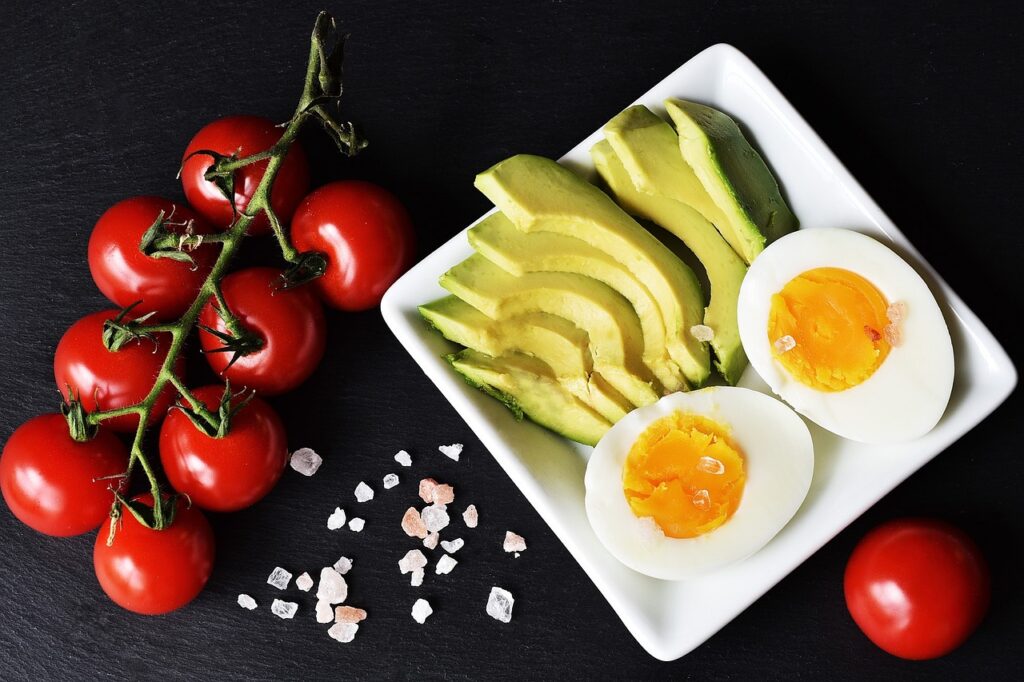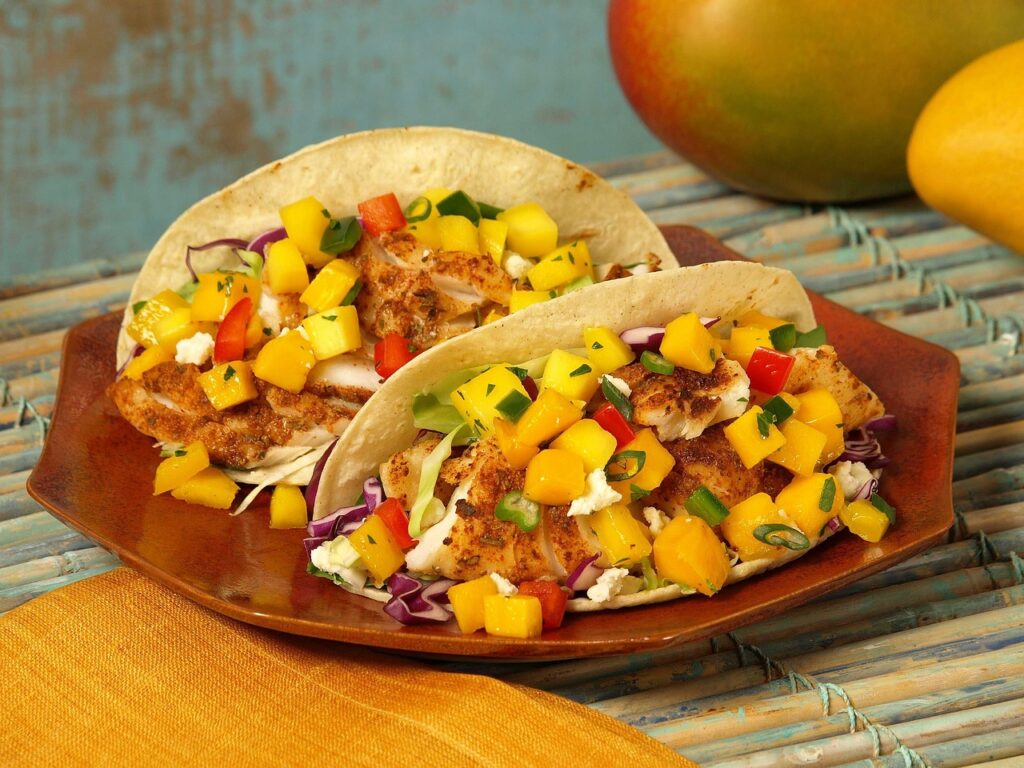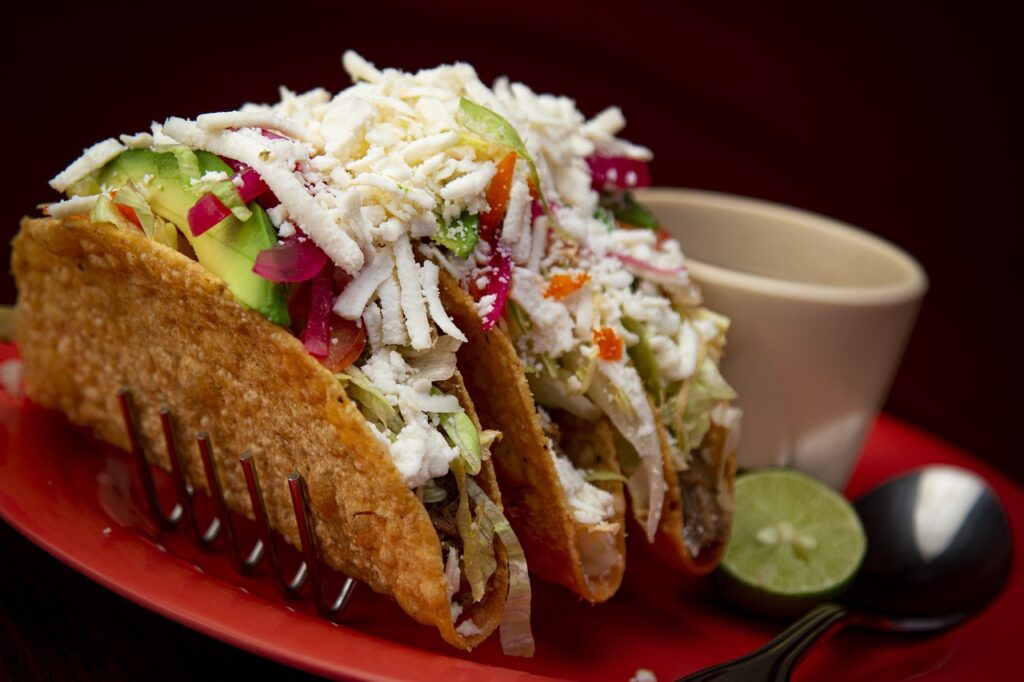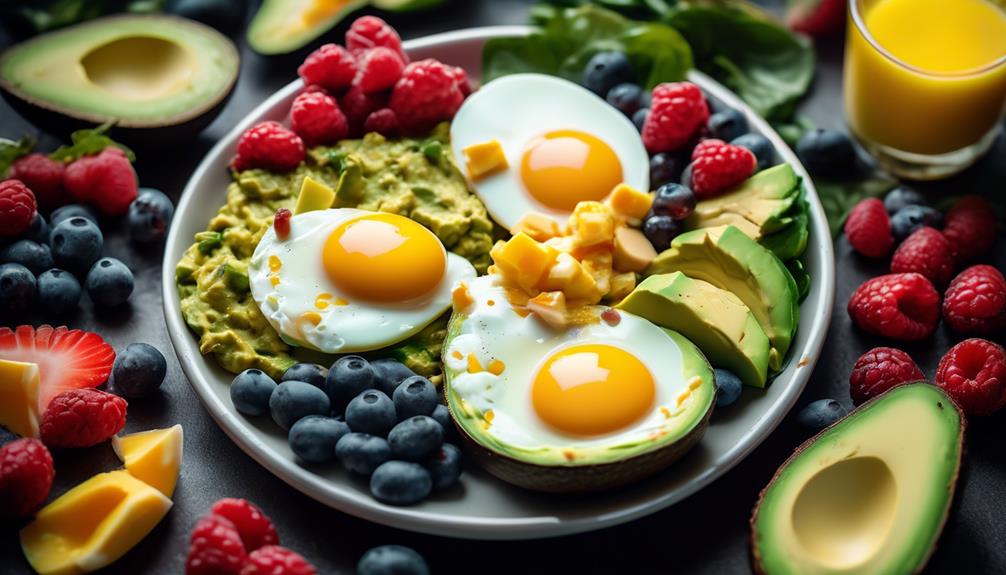Looking to cut back on carbs but still enjoy your favorite pasta dishes? You may be interested in exploring some low-carb alternatives that are suitable for a vegetarian keto diet.
There are quite a few options available that can satisfy your cravings without sabotaging your nutritional goals.
So, if you're curious to discover the best pasta substitutes that are both low in carbs and vegetarian-friendly, keep on reading…
Shirataki Noodles

Shirataki noodles, a popular low-carb pasta alternative for vegetarian keto, are made from the konjac plant and are known for their unique texture and versatility in various dishes. These noodles offer several nutritional benefits that make them an excellent choice for those on a low-carb diet.
One of the main advantages of shirataki noodles is their low calorie and carbohydrate content. They're extremely low in calories, with only about 20 calories per serving. This makes them a suitable option for those looking to reduce their calorie intake and lose weight. Additionally, shirataki noodles are virtually carb-free, making them ideal for people following a low-carb or ketogenic diet.
Shirataki noodles are also a good source of fiber. They contain glucomannan, a type of soluble fiber that can help promote feelings of fullness and aid in digestion. This can be beneficial for those looking to manage their weight or improve their digestive health.
When it comes to cooking techniques, shirataki noodles are easy to prepare. They come packaged in water and need to be rinsed thoroughly before using them in recipes. Once rinsed, they can be boiled or stir-fried to remove any residual taste and improve their texture. Shirataki noodles can be used as a replacement for traditional pasta in a variety of dishes, such as stir-fries, soups, and salads.
Zucchini Noodles (Zoodles)
If you're looking for another low-carb pasta alternative to add to your vegetarian keto repertoire, zucchini noodles, also known as zoodles, are a delicious and nutritious option. Made from spiralized zucchini, zoodles provide a satisfying pasta-like texture without the excess carbs.
Here are some reasons why zucchini noodles are a great choice for your vegetarian keto diet:
- Versatility: Zucchini noodles can be used in a variety of dishes, from stir-fries to salads and even soups. They can be enjoyed raw or cooked, allowing for endless culinary possibilities.
- Nutrient-rich: Zucchini is packed with vitamins and minerals such as vitamin C, vitamin A, and potassium. By swapping traditional pasta for zucchini noodles, you'll be adding more nutrients to your meal.
- Low in carbs and calories: Zucchini noodles are significantly lower in carbs and calories compared to traditional pasta. This makes them an ideal choice for those following a low-carb or keto diet.
- Easy to make: Creating zucchini noodles is simple with the help of a spiralizer. You can find a variety of spiralizer options on the market, ranging from handheld to countertop models.
- Delicious recipes: There are countless zucchini noodle recipes available that cater to vegetarian keto diets. From zoodle carbonara to zucchini noodle pad Thai, you can enjoy your favorite pasta dishes with a low-carb twist.
Incorporating zucchini noodles into your vegetarian keto diet can provide a tasty and healthy alternative to traditional pasta. Get creative with your recipes and enjoy the benefits of this versatile and nutritious low-carb option.
Spaghetti Squash

Spaghetti squash is a nutritious and versatile low-carb pasta alternative that can be enjoyed on a vegetarian keto diet. This unique vegetable gets its name from its stringy flesh that resembles spaghetti noodles when cooked. To prepare spaghetti squash, start by cutting it in half lengthwise and scooping out the seeds. Then, roast it in the oven until the flesh becomes tender and can be easily scraped into strands using a fork. Alternatively, you can also steam or microwave the squash to achieve a similar result.
Not only does spaghetti squash offer a delicious pasta-like texture, but it also comes with several nutritional benefits. This vegetable is low in calories and carbohydrates, making it an excellent choice for those following a low-carb or keto diet. It's also rich in vitamins A and C, as well as minerals like potassium and manganese. Additionally, spaghetti squash is a great source of dietary fiber, which can aid in digestion and help you feel fuller for longer.
Thanks to its mild and slightly sweet flavor, spaghetti squash can be paired with a variety of sauces and toppings. From marinara sauce to pesto or even creamy Alfredo, the possibilities are endless. Whether you're vegetarian or following a keto diet, spaghetti squash is a satisfying and nutrient-packed alternative to traditional pasta.
Cauliflower Rice
Cauliflower rice is a nutrient-rich alternative to traditional rice, making it a great option for those following a low-carb vegetarian keto diet. It isn't only low in carbs, but also high in fiber, vitamins, and minerals.
Additionally, cauliflower rice is incredibly versatile and can be used in a variety of dishes, from stir-fries to grain-free sushi rolls.
Best of all, it's easy to prepare, whether you choose to make it from scratch or opt for a pre-packaged version.
Nutrient-Rich Alternative
To enhance the nutritional value of your low-carb pasta dishes, consider incorporating a nutrient-rich alternative such as cauliflower rice. Cauliflower rice is a versatile and healthy choice that can provide numerous health benefits.
Here are some reasons why cauliflower rice is a great addition to your nutrient-rich recipes:
- High in nutrients: Cauliflower is packed with essential vitamins and minerals like vitamin C, vitamin K, and potassium.
- Low in carbs: Compared to traditional pasta, cauliflower rice is significantly lower in carbohydrates, making it suitable for a low-carb diet.
- High in fiber: Fiber is essential for a healthy digestive system, and cauliflower rice provides a good amount of dietary fiber.
- Antioxidant-rich: Cauliflower contains antioxidants that can help protect against cellular damage and reduce the risk of chronic diseases.
- Versatile and easy to prepare: Cauliflower rice can be used in a variety of dishes, from stir-fries to salads, making it a versatile and convenient choice for nutrient-rich recipes.
Versatile and Flavorful
When looking for a versatile and flavorful alternative to traditional pasta, cauliflower rice is an excellent choice for those following a low-carb vegetarian keto diet.
Cauliflower rice is made by finely chopping cauliflower florets into rice-like pieces, creating a low-carb and nutrient-rich base for various dishes.
To enhance the flavor of cauliflower rice, there are several flavorful seasoning options to consider. You can add spices like garlic powder, onion powder, turmeric, or paprika to give it a savory kick. Additionally, you can experiment with herbs like basil, rosemary, or thyme for a fresh and aromatic taste.
Cooking techniques also play a crucial role in maximizing the flavor of cauliflower rice. Sautéing it in olive oil or ghee can add a rich and buttery taste, while roasting it in the oven can create a deliciously caramelized flavor.
Easy to Prepare
Preparing cauliflower rice is a quick and simple process that can be easily mastered in your own kitchen. Here are some reasons why cauliflower rice is an easy low-carb alternative for vegetarian keto:
- Nutritional Value: Cauliflower is packed with essential nutrients like vitamin C, vitamin K, and fiber, making it a healthy choice for your keto diet.
- Cooking Time: Compared to traditional pasta, cauliflower rice cooks in a fraction of the time. Simply pulse cauliflower florets in a food processor until they resemble rice grains, then sauté or steam for a few minutes until tender.
- Versatility: Cauliflower rice can be used as a base for various dishes, such as stir-fries, salads, and even as a substitute for rice in sushi rolls.
- Storage: You can easily prepare a large batch of cauliflower rice and store it in the refrigerator for up to a week, making it a convenient option for quick and easy meals.
- Adaptability: Cauliflower rice can be flavored with spices and herbs, allowing you to customize it to your taste preferences and create a wide range of delicious low-carb dishes.
Cabbage Noodles
If you're looking for a low-carb pasta alternative on a vegetarian keto diet, cabbage noodles might be a great option for you.
Not only are they low in carbs, but they also offer a range of nutritional benefits such as vitamins C and K, fiber, and antioxidants.
Plus, cabbage noodles can be easily prepared using techniques like sautéing or boiling, making them a versatile and satisfying addition to your meals.
Nutritional Benefits
Cabbage noodles offer a nutrient-dense and low-carb alternative to traditional pasta, making them a valuable addition to a vegetarian keto diet. These noodles provide a range of nutritional benefits that can support overall health and wellbeing.
Here are some key reasons why cabbage noodles are a great choice:
- High in fiber: Cabbage is rich in fiber, which helps promote digestion and keeps you feeling full for longer.
- Low in calories: Cabbage noodles are low in calories, making them a suitable option for those looking to manage their weight.
- Rich in vitamins and minerals: Cabbage is packed with essential vitamins and minerals, including vitamin C, vitamin K, and potassium, which are important for maintaining overall health.
- Antioxidant properties: Cabbage contains antioxidants that help protect the body against damage caused by harmful free radicals.
- Blood sugar management: Cabbage noodles have a low glycemic index, meaning they've a minimal impact on blood sugar levels.
Incorporating cabbage noodles into your vegetarian keto diet can provide you with a nutritious and satisfying pasta alternative while supporting your health goals.
Cooking Techniques
To achieve delicious and satisfying results when cooking cabbage noodles, it's important to use the right cooking techniques. Cabbage noodles are a fantastic low-carb pasta alternative for vegetarian keto diets.
One popular method is to sauté the cabbage noodles in a skillet with some olive oil or butter. This cooking technique helps to soften the noodles and bring out their natural sweetness.
Another technique is to blanch the cabbage noodles briefly in boiling water, then quickly shock them in ice water to stop the cooking process. This method helps to retain the noodles' crispness and vibrant green color.
When it comes to flavor variations, you can add spices like garlic, red pepper flakes, or herbs such as basil or parsley to enhance the taste.
Experimenting with different cooking techniques and flavors will help you create a variety of delicious cabbage noodle dishes for your vegetarian keto diet.
Konjac Noodles

Konjac noodles, also known as shirataki noodles, offer a low-carb and gluten-free alternative to traditional pasta for vegetarian keto diets. These noodles are made from the root of the konjac plant, which is native to Asia. They're known for their unique texture and ability to absorb flavors well. Konjac noodles can be prepared using various cooking techniques to enhance their taste and texture.
Here are some cooking techniques for konjac noodles:
- Boiling: Boil the noodles for a few minutes to reduce their natural odor and improve their texture.
- Dry roasting: Dry roast the noodles in a pan for a few minutes to remove excess moisture and enhance their flavor.
- Stir-frying: Stir-fry the noodles with vegetables and sauces for a delicious and filling meal.
- Baking: Bake the noodles with cheese and sauce for a low-carb pasta bake alternative.
- Cold salads: Use konjac noodles in cold salads by rinsing them under cold water and tossing them with fresh vegetables and dressings.
In addition to being a versatile ingredient, konjac noodles also offer several nutritional benefits. They're extremely low in calories and carbohydrates, making them a suitable choice for those following a low-carb or keto diet. Konjac noodles are also rich in fiber, which can help promote feelings of fullness and aid in digestion.
Eggplant Lasagna Sheets
Eggplant lasagna sheets provide a delicious and low-carb alternative to traditional pasta for vegetarian keto diets. These sheets are made by thinly slicing eggplant and using them as a replacement for lasagna noodles. By using eggplant instead of pasta, you can enjoy a satisfying lasagna dish while keeping your carbohydrate intake low.
One of the benefits of using eggplant lasagna sheets is their low-carb content. Eggplants are naturally low in carbohydrates, making them a suitable choice for those following a keto diet. Compared to traditional lasagna noodles, which are high in carbs, eggplant lasagna sheets offer a way to reduce the carb content of your meal without sacrificing flavor.
In addition to being low in carbs, eggplant is also a good source of fiber and various nutrients. It contains vitamins like vitamin C and vitamin K, as well as minerals like potassium and manganese. Moreover, eggplant is known for its antioxidant properties, which can help protect your cells from damage.
To make eggplant lasagna sheets, start by slicing the eggplant lengthwise into thin strips. You can then layer them in your lasagna dish, alternating with your choice of fillings such as cheese, sauce, and vegetables. Bake the lasagna until the eggplant is tender and the flavors have melded together.
Tofu Shirataki Noodles

Tofu Shirataki noodles, made from a combination of tofu and konjac flour, are a popular low-carb pasta alternative for vegetarian keto diets. These noodles have gained popularity due to their ability to provide a pasta-like texture without the high carbohydrate content.
Here are some key cooking techniques and nutritional benefits of tofu shirataki noodles:
- Rinsing and Boiling: Before cooking, it's important to rinse the noodles thoroughly to remove any unwanted smell. Boiling them for a few minutes helps improve the texture.
- Versatility: Tofu shirataki noodles can be used in various dishes, such as stir-fries, soups, and pasta salads. They absorb the flavors of the ingredients they're cooked with, making them a versatile choice.
- Low in Calories and Carbs: Tofu shirataki noodles are extremely low in calories and carbohydrates, making them an excellent choice for those following a low-carb or keto diet. They can help keep you feeling full without compromising your dietary goals.
- High in Fiber: These noodles are rich in soluble fiber, which aids digestion and helps maintain stable blood sugar levels. The high fiber content also contributes to a feeling of fullness.
- Gluten-Free: Tofu shirataki noodles are naturally gluten-free, making them a suitable option for individuals with gluten sensitivities or celiac disease.
Incorporating tofu shirataki noodles into your vegetarian keto diet can provide a satisfying pasta-like experience while keeping your carbohydrate intake low. Experiment with different cooking techniques and enjoy the nutritional benefits they offer.
Edamame Spaghetti
If you're looking for a low-carb pasta alternative that's packed with nutritional benefits, edamame spaghetti is worth considering.
Edamame, which are young soybeans, are rich in protein, fiber, and various vitamins and minerals.
Edamame spaghetti is also gluten-free and has a mild, slightly nutty flavor.
To cook it, simply boil the spaghetti in salted water for a few minutes until tender, then drain and serve with your favorite sauce or toppings.
Nutritional Benefits of Edamame
Edamame spaghetti offers a range of nutritional benefits that make it a valuable addition to a vegetarian keto diet. Made from whole edamame beans, this low-carb pasta alternative is packed with essential nutrients. Here are some of the key reasons why edamame spaghetti is a healthy choice:
- High in protein: Edamame spaghetti is a great source of plant-based protein, making it an excellent option for vegetarians on a keto diet.
- Low in carbs: With only a fraction of the carbohydrates found in traditional pasta, edamame spaghetti helps you stay in ketosis while enjoying a satisfying meal.
- Rich in fiber: Fiber is essential for maintaining digestive health and promoting feelings of fullness. Edamame spaghetti contains a good amount of fiber, aiding in digestion and preventing overeating.
- Contains essential minerals: Edamame is rich in minerals like iron, magnesium, and potassium, which are important for overall health and wellbeing.
- Antioxidant powerhouse: Edamame is packed with antioxidants, such as isoflavones, which have been linked to numerous health benefits, including reduced inflammation and improved heart health.
Incorporating edamame spaghetti into your vegetarian keto diet not only provides a delicious pasta alternative but also delivers a wide range of nutritional benefits.
Cooking Tips for Edamame Spaghetti
To ensure optimal cooking results, follow these helpful tips when preparing edamame spaghetti.
Edamame spaghetti is a nutritious and delicious alternative to traditional pasta, packed with plant-based protein and fiber.
When it comes to cooking techniques, it's important to cook edamame spaghetti according to the instructions on the packaging. This will ensure that the pasta is cooked to the right consistency. Overcooking can result in a mushy texture, while undercooking may leave it too firm.
To enhance the flavor of your edamame spaghetti, you can experiment with different variations. Try adding sautéed vegetables, garlic, and herbs for a savory twist. Alternatively, toss it with olive oil, lemon zest, and fresh herbs for a refreshing and light dish.
With these cooking tips and flavor variations, you can enjoy a satisfying and healthy meal with edamame spaghetti.
Hearts of Palm Pasta

Hearts of Palm Pasta offers a nutritious and low-carb alternative to traditional pasta options. Made from the inner core of certain palm trees, this pasta substitute isn't only delicious but also packed with health benefits. Here are some cooking techniques and nutritional benefits of Hearts of Palm Pasta:
- Cooking Techniques: Hearts of Palm Pasta is incredibly versatile and can be cooked in various ways. You can boil it, sauté it, or even toss it in a stir-fry. It has a tender texture that resembles al dente pasta, making it a perfect choice for your favorite pasta dishes.
- Low in Carbs and Calories: If you're following a low-carb or keto diet, Hearts of Palm Pasta is an excellent choice. It contains only a fraction of the carbs and calories found in traditional pasta, making it easier to stay within your dietary goals.
- Rich in Fiber: Hearts of Palm Pasta is a great source of dietary fiber. Fiber is essential for digestive health and can help regulate blood sugar levels. It also promotes feelings of fullness, which can aid in weight management.
- Packed with Nutrients: Hearts of Palm Pasta is a good source of vitamin C, folate, potassium, and manganese. These nutrients play a crucial role in supporting immune function, bone health, and energy production.
- Gluten-Free: Hearts of Palm Pasta is naturally gluten-free, making it suitable for individuals with gluten sensitivities or celiac disease. It allows you to enjoy pasta dishes without compromising your dietary needs.
Incorporating Hearts of Palm Pasta into your vegetarian keto lifestyle not only expands your culinary options but also provides you with a nutritious and satisfying meal.
Broccoli Rice
Broccoli rice isn't only a delicious low-carb alternative to traditional rice, but it also offers numerous nutritional benefits. Packed with vitamins, minerals, and fiber, broccoli is a nutrient powerhouse that can support a healthy vegetarian keto diet.
When it comes to cooking broccoli rice, you have various methods to choose from, including steaming, sautéing, or even baking. Additionally, you can experiment with different flavor variations, such as adding herbs, spices, or even mixing in other vegetables to create a customized dish that suits your taste preferences.
Nutritional Benefits of Broccoli
With its rich nutrient profile and versatile culinary applications, broccoli rice offers a nutritious and delicious option for those seeking low-carb alternatives in their vegetarian keto diet.
Broccoli is packed with essential vitamins and minerals, making it a powerhouse of nutrients. It's an excellent source of vitamin C, vitamin K, and folate, which are important for immune function, blood clotting, and cell growth. Additionally, broccoli is high in fiber, aiding in digestion and promoting feelings of fullness.
Cooking techniques for broccoli rice include steaming, sautéing, or even roasting to preserve its nutritional content.
Incorporating broccoli rice into your meals provides a satisfying and nutritious way to enjoy a low-carb lifestyle.
- High in vitamins C, K, and folate
- Aids in digestion and promotes satiety due to its high fiber content
- Versatile cooking techniques such as steaming, sautéing, or roasting
- Packed with essential nutrients for a healthy immune system
- Low-carb alternative for a satisfying vegetarian keto diet.
Cooking Methods for Broccoli Rice
To ensure that your broccoli rice retains its nutritional value and texture, it's important to choose the right cooking method. There are several cooking techniques you can use to prepare broccoli rice, each offering its own unique flavor variations.
One popular method is steaming, which helps to preserve the nutrients in the broccoli while maintaining a crisp texture. Simply steam the broccoli florets until they're tender but still slightly firm.
Another option is stir-frying, which adds a delicious charred flavor to the broccoli rice. Heat a small amount of oil in a pan, then add the broccoli and cook it quickly over high heat until it's lightly browned and tender.
Lastly, you can also roast the broccoli rice in the oven. Toss the florets with some olive oil, salt, and pepper, and spread them out on a baking sheet. Roast at a high temperature until they're golden brown and crispy.
Experimenting with these cooking techniques will allow you to discover your favorite flavor variations for broccoli rice.
Flavor Variations for Broccoli Rice
For a variety of flavor variations in your broccoli rice, try experimenting with different herbs, spices, and seasonings. By adding these ingredients, you can elevate the taste of your dish and create exciting new flavors. Here are some ideas to get you started:
- Garlic and Parmesan: Saute minced garlic in olive oil and toss it with your broccoli rice. Finish off with a sprinkle of grated Parmesan cheese for a savory and aromatic twist.
- Lemon and Dill: Squeeze fresh lemon juice over your cooked broccoli rice and sprinkle it with chopped dill. This combination adds a refreshing and tangy flavor.
- Curry Powder: Add a teaspoon of curry powder to your cooking process to infuse your broccoli rice with warm, earthy flavors.
- Smoked Paprika: Sprinkle some smoked paprika over your cooked broccoli rice for a subtle smoky taste.
- Red Pepper Flakes: For a spicy kick, add a pinch of red pepper flakes to your broccoli rice during the cooking process.
These flavor variations can be combined with different cooking methods for broccoli rice, such as steaming, sautéing, or baking, to create a versatile and delicious side dish that complements your vegetarian keto lifestyle.
Butternut Squash Noodles
Butternut squash noodles offer a delicious and nutritious alternative to traditional pasta, making them an excellent choice for vegetarian keto diets. These noodles aren't only low in carbs but also packed with essential nutrients. A one-cup serving of butternut squash noodles contains only 63 calories and 15 grams of carbs, making them an ideal option for those following a low-carb diet. They're also a good source of vitamin A, providing over 400% of the recommended daily intake. Additionally, butternut squash noodles are rich in fiber, which aids in digestion and helps to keep you feeling full for longer.
When it comes to cooking techniques, there are a few options to choose from. One popular method is to spiralize the butternut squash using a spiralizer or vegetable peeler to create thin, noodle-like strands. These can then be sautéed in a pan with some olive oil until tender.
Another option is to roast the noodles in the oven for a slightly caramelized flavor. Simply toss them in some oil, season with salt and pepper, and bake at 400°F for about 15-20 minutes, or until they're soft and golden.
Kelp Noodles

Kelp noodles, a versatile and nutrient-rich option, can be a great addition to a vegetarian keto diet. These translucent noodles are made from kelp, a type of seaweed, and offer a low-carb alternative to traditional pasta. Here are some key points to consider when incorporating kelp noodles into your vegetarian keto lifestyle:
- Low in carbohydrates: Kelp noodles are virtually carb-free, making them an excellent choice for those following a low-carb or keto diet. They contain only trace amounts of carbohydrates, making them a suitable option for maintaining ketosis.
- High in fiber: Despite their low carb content, kelp noodles are rich in fiber. Fiber is essential for maintaining healthy digestion and promoting feelings of fullness, which can aid in weight management.
- Nutrient-packed: Kelp noodles are a good source of vitamins and minerals, including iodine, calcium, and iron. These nutrients are important for overall health and can support various bodily functions.
- Easy to prepare: Kelp noodles are incredibly easy to prepare. Simply rinse them under cold water and they're ready to use in your favorite dishes. They've a neutral taste, allowing them to absorb the flavors of the dish they're paired with.
- Versatile: Kelp noodles can be used in a variety of recipes, from salads and stir-fries to soups and pasta dishes. They can be enjoyed raw or cooked, providing a texture similar to traditional noodles.
Incorporating kelp noodles into your vegetarian keto diet can provide a low-carb, high-fiber alternative to traditional pasta. Experiment with different kelp noodle recipes to discover new and exciting ways to enjoy this nutritious ingredient.
Cucumber Noodles
Cucumber noodles are a refreshing and low-carb alternative to traditional pasta that can be enjoyed on a vegetarian keto diet. These noodles are made by spiralizing fresh cucumbers into long, thin strands, resembling spaghetti. They aren't only a great way to add variety to your meals but also provide several health benefits.
Cucumber noodles are incredibly low in carbs and calories, making them a perfect choice for those following a vegetarian keto diet. A cup of cucumber noodles contains only about 16 calories and 3 grams of carbs, compared to the 200 calories and 40 grams of carbs found in a cup of regular pasta. This makes cucumber noodles an excellent option for weight loss and managing blood sugar levels.
In addition to being low in carbs, cucumber noodles are also high in water content, which helps keep you hydrated and promotes healthy digestion. They're rich in vitamins and minerals, including vitamin K, vitamin C, and potassium. These nutrients support bone health, boost immunity, and regulate blood pressure.
Cucumber noodles can be enjoyed in a variety of ways. You can toss them with your favorite low-carb sauce, such as pesto or marinara, or use them as a base for salads. They can also be added to stir-fries or used as a substitute for traditional pasta in cold noodle salads.
Carrot Noodles

Carrot noodles are a nutritious and versatile low-carb alternative to traditional pasta that can be enjoyed on a vegetarian keto diet. Made from spiralized or thinly sliced carrots, these vegetable noodles offer a satisfying texture and can be used in a variety of dishes.
Here are some key points to consider when incorporating carrot noodles into your diet:
- Low in carbs and calories: Carrot noodles are an excellent option for those following a low-carb or keto diet. They contain significantly fewer carbs and calories compared to traditional pasta, making them a great choice for weight management.
- Rich in nutrients: Carrots are packed with essential vitamins and minerals, including vitamin A, vitamin K, and potassium. By using carrot noodles as a pasta alternative, you can increase your intake of these beneficial nutrients.
- Versatile and easy to prepare: Carrot noodles can be used in a range of recipes, from salads and stir-fries to soups and casseroles. They can be quickly cooked or enjoyed raw, depending on your preference.
- Adds vibrant color to your meals: Carrot noodles bring a pop of color to your plate, making your dishes visually appealing. They can enhance the presentation of your meals and make them more enticing.
- Supports digestion and gut health: Carrots are a good source of dietary fiber, which plays a crucial role in supporting healthy digestion and promoting a balanced gut microbiome. Incorporating carrot noodles into your meals can help you increase your fiber intake and improve digestive health.
With their versatility, health benefits, and delicious taste, carrot noodles are a fantastic addition to any vegetarian keto diet. Get creative with your carrot noodle recipes and enjoy a guilt-free alternative to traditional pasta.
Conclusion
In conclusion, for those following a vegetarian keto diet, there are several delicious low-carb pasta alternatives available.
Shirataki noodles, zucchini noodles, spaghetti squash, cauliflower rice, cabbage noodles, butternut squash noodles, kelp noodles, cucumber noodles, and carrot noodles are all excellent options.
These alternatives can help satisfy pasta cravings while still maintaining a low-carb lifestyle.
Experiment with different options and find the ones that best suit your preferences and dietary needs.







